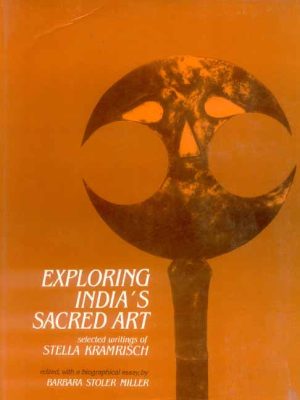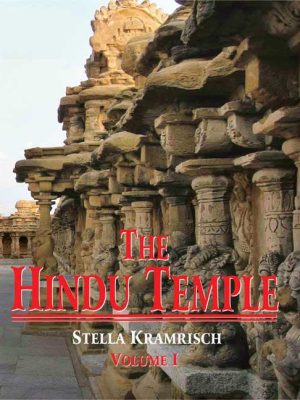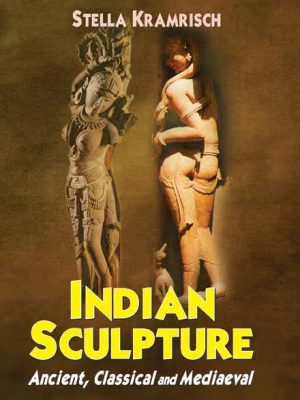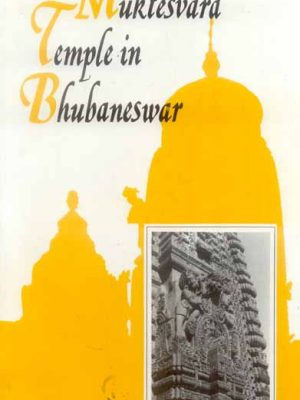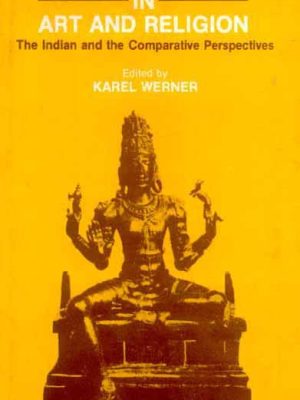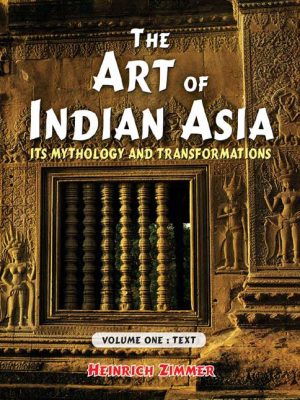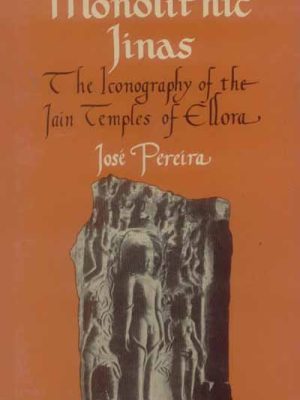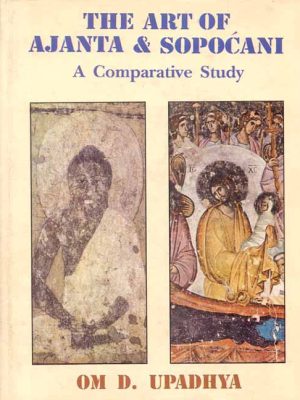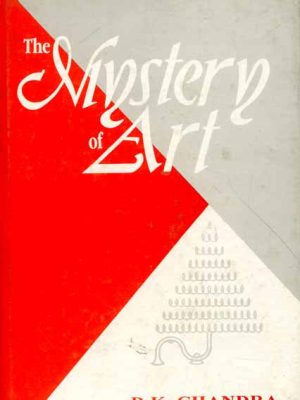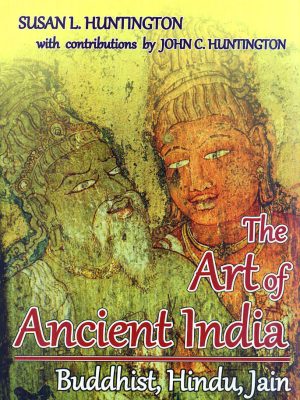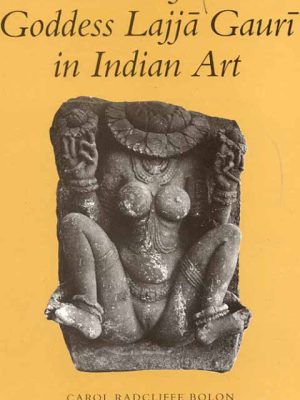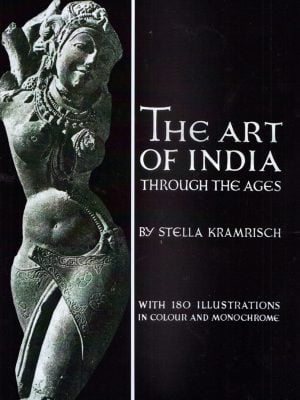Art Architecture Antiquities
-
Exploring India’s Sacred Art: Selected Writings of Stella Kramrisch Ed. & with a biographical Essay
Exploring India’s Sacred Art: Selected Writings of Stella Kramrisch Ed. & with a biographical Essay
Exploring India’s Sacred Art presents a selection of Stella Kramrisch’s influential essays, along with a biographical essay. The writings collected here emphasize the cultural and symbolic values of Indian art. The first section discusses the social and religious contexts of art. This is followed by essays on various forms of ritual art. The section entitled “The Subtle Body” is derived from her term for the form that underlies concrete shapes; it includes studies of literary and visual symbolism. Further essays concentrate on formal and technical aspects of temple structure and painting in the context of their symbolic meaning. Over 150 illustrations, many of them prepared especially for this volume, provide a vital visual dimension to her writings. Also included is Joseph Dye’s comprehensive bibliography of her works. Exploring India’s Sacred Art testifies to the life and work of one of this century’s greatest art scholars and provides an unparalleled source of insight into Indian art and culture.
₹1,495.00 -
The Hindu Temple (2 Vols.)
The Hindu Temple (2 Vols.)
The Hindu Temple is the sum total of architectural rites performed on the basis of its myth. The myth covers the ground and is the plan on which the structure is raised. It explains in detail the religious and spiritual significance of the temple b4y means of copious references to Sanskrit texts„both sacred and scientific. It depicts the Hindu Temple as not merely a heap of brick, stone or wood but a visible symbol of aspirations of pious men and women, the throbbings of their hearts in religious fervor and their endeavor for the attainment of salvation. The first four parts of this volume are devoted to the philosophy of temple architecture. Part V deals with the origin and development of the temple from the Vedic fire altars to the latest forms. Part VI discusses the pyramidal and curvilinear superstructures in the main varieties of the _ikhara, the
_ikhara enmeshed in Gavaksas and the composite _ikhara. Part VII described the proportional measurements and the rhythmic disposition of the garbha-grha and the vertical section. It discusses the proportions of the Mandapa and the types of temples described in the ancient sanskrit texts like the Brhatasmhita and the Samarnganasutradhara.
This most comprehensive and authoritative treatise of ancient Indian Temple Architecture will prove of immense help to the students of ancient Indian culture.
This two-volume work explains in detail the religious and spiritual significance of the temple by means of copious references to Sanskrit texts–both sacred and scientific. It depicts the Hindu Temple as not merely a heap of brick, stone or wood but a visible symbol of aspirations of pious men and women, the throbbings of their hearts in religious fervor and their endeavor for the attainment of salvation.
The first four parts of the work are devoted to the philosophy of temple architecture. Part V deals with the origin and development of the temple from the Vedic fire altars to the latest forms. Part VI discusses the pyramidal and curvilinear superstructures in the main varieties of the Sikhara, the Sikhara enmeshed in Gavaksas and the composite Sikhara. Part VII describes the proportional measurements and the rhythmic disposition of the garbha-grha and the vertical section. It discusses the proportions of the Mandapa and the types of temples described in ancient Sanskrit texts like the Brhatsamhita and the Samaranganasutradhara.
This most comprehensive and authoritative treatise of ancient Indian Temple Architecture will prove of immense help to the students of ancient Indian culture.
Contents (Vol. 1)
PART I: The Site, Part II: The Plan, Part III: Plan and Supernal Man, Part IV: The Substances of which the temple is built, Names and Origins of the Temple, Part VI. The Superstructure, Part VII: Proportionate Measurement and Varieties of the Temple (Volume 2) Part VIII: The Images of the Temple, Explanation of Plates, Appendix, Sources, Index, Plates I-IXXX.
₹4,000.00The Hindu Temple (2 Vols.)
₹4,000.00 -
Indian Sculpture: Ancient, Classical and Mediaeval
Indian Sculpture: Ancient, Classical and Mediaeval
Anyone with an understanding of art in general and a knowledge, however slight, of Indian things, will, on being shown a work of Indian sculpture, unfailingly label it Indian. Differences in age and origin, however clearly marked to the discerning eye, when pointed out to the outsider, will be apprehended only with more or less difficulty. There is something so strong, and at the same time unique, in any Indian work of art that its ‘Indianness’ is felt first of all, and what it is, is seen only on second thought.
How this Indianness is expressed in terms of relation between line, surface, volume and other elements of visulisation is dealt with in this book. There are permanent qualities throughout the fabric of Indian sculpture which are discussed in detail. These essential qualities, all inter-related and inseparable, contain within their compass the life of Indian plastic art.
The book surveys the structure of Indian sculpture in its relevant aspects. The underlying and essential qualities are viewed in their permanency throughout the special conditions that the single monuments imply. Their outward connections, geographical and chronological, are seen to resolve themselves into ethical problems and those of the artistic process itself.
While stylistical investigations are the basis of this book, Indian sculpture is dealt with as conditioned by the Indian craftsman. His consciousness makes him known to himself as a part of nature and his work is the form of this ‘naturalism’. Its degree and aspects vary according to the levels of his consciousness.
₹800.00 -
The Muktesvara Temple in Bhubaneswar
The Muktesvara Temple in Bhubaneswar
The Muktesvara Temple in Bhubaneswar
About the Author(s)
WALTER SMITH
₹950.00 -
Symbols in Art and Religion: The Indian and the Comparative Perspective
Symbols in Art and Religion: The Indian and the Comparative Perspective
Symbols in Art and Religion: The Indian and the Comparative Perspective
About the Author(s)
KAREL WERNER
₹545.00 -
The Art of Indian Asia, 2 Vols.: Its Mythology and Transformation: Volume One: Text, Volume Two: Plates
The Art of Indian Asia, 2 Vols.: Its Mythology and Transformation: Volume One: Text, Volume Two: Plates
The present work is intended not as a handbook but as an introduction to its subject, to be read from beginning to end. Each section is preparation for the next. Chapter I, presenting as it does a brief historical outline of the transformations of Indian art as well as a key to the symbology of the forms, can be used as a guide during the first perusal of the pictures. For the reader then wishing to find quickly the several portions of text referring to any spefific group of monuments, a copious index has been supplied, together with textual references in the Description of Plates and cross-references in the footnotes. Marginal references to the Plates, furthermore, accompany the text. These should make possible an easy and rapid correlation of the materials of the two volumes.
The first two groups of Plates in the text volume illustrate, for the most part, the anthropological and comparative observations of the text. Included among them, however, are a few photographs that are indispensable to Dr. Zimmer’s argument but do not meet the aesthetic standard of the Plates volume. On the other hand, the final cluster of text Plates constitutes. an independent pictorial appendix, illustrating the miniature and Rajput art of the eleventh to nineteenth centuries A.D. Dr. Zimmer’s notes on this subject had not been developed beyond preliminary jottings, and could not be incorporated in any major section of the text. But since there is actually a rather special, very delicate, lyric quality about these paintings on palm leaf and paper, which sets them apart, somewhat from the tradition of the stone monuments, it is not inappropriate that they should be given a separate place.
₹8,000.00 -
Monolithic Jinas: The Iconography of the Jain Temples of Ellora
Monolithic Jinas: The Iconography of the Jain Temples of Ellora
Monolithic Jinas: The Iconography of the Jain Temples of Ellora
About the Author(s)
CARMEL BERKSON
₹600.00 -
The Art of Ajanta and Sopocani: A Comprehensive Study
The Art of Ajanta and Sopocani: A Comprehensive Study
Pauranic Prana-aesthetics, a finer shade different from that of Vitalistic aesthetics (the earlier having breathing-rhythm of “Kshaya- Vriddhi” – diminution and augmentation – other than the latter’s emphasis only on the rhythm of augmentation) has been delineated in this study with examples from the world’s two of the best art-monuments: Ajanta (India), now not remaining unknown even to the most casual connoisseur, and Sopocani (Yugoslavia), the most significant and monumentally beautiful work of Byzantine art.
Tracing Prana-aesthetics as the aesthetics of inner-light coded in the creeper-motif by the artists of Ajanta, this work emphasises decoding of the creeper-motif by Byzantine artists culminating into the frescoes of Sopocani done in Hellenistic Byzantine aesthetics beatified by Hesycast meditation to which that
of Buddhists was not unknown. Comparisons of various determinant aspects, aesthetics and artistic denominators, and constraints not allowing similar consummation are properly investigated to substantiate the thesis that Pranaaesthetics transfigures at Ajanta but transubstantiates at Sopocani. The significance of the anabolic aspects of this aesthetics is highlighted especially as a way out from the reductivistic tendencies of the present day visualarts straining them upto the stage of catabolic dissolution.
₹1,500.00 -
The Mystery of Art
The Mystery of Art
The Mystery of Art lets the forms of art tell their own tale. Instead of analyzing the art expressions this narrative work invites the reader to re-discover the functions of art. The observation of the art-scenes starts with the present and winds its way backward through time and history. In the course of this journey the different art-expressions reveal themselves in a novel light.
About the Author(s)
D K Chandra
₹295.00The Mystery of Art
₹295.00 -
The Art of Ancient India: Buddhist, Hindu, Jain
The Art of Ancient India: Buddhist, Hindu, Jain
To scholars in the field, the need for an up-to-date overview of the art of South Asia has been apparent for decades. Although many regional and dynastic genres of Indic art are fairly well understood, the broad, overall representation of Indiaês centuries of splendor has been lacking. The Art of Ancient India is the result of the authorês aim to provide such a synthesis. Noted expert Sherman E. Lee has commented: –Not since Coomaraswamyês History of Indian and Indonesian Art (1927) has there been a survey of such completeness.” Indeed, this work restudies and reevaluates every frontier of ancient Indic art _ from its prehistoric roots up to the period of Muslim rule, from the Himalayan north to the tropical south, and from the earliest extant writing through the most modern scholarship on the subject.
This dynamic survey-generously complemented with 775 illustrations, including 48 in full color and numerous architectural ground plans, and detailed maps and fine drawings, and further enhanced by its guide to Sanskrit, copious notes, extensive bibliography, and glossary of South Asian art terms-is the most comprehensive and most fully illustrated study of South Asian art available.
The works and monuments included in this volume have been selected not only for their artistic merit but also in order to both provide general coverage and include transitional works that furnish the key to an all encompassing view of the art.
An outstanding portrayal of ancient Indiaês highest intellectual and technical achievements, this volume is written for many audiences: scholars, for whom it provides an up-to-date background against which to examine their own areas of study; teachers and students of college level, for whom it supplies a complete summary of and a resource for their own deeper investigations into Indic art; and curious readers, for whom it gives a broad-based introduction to this fascinating area of world art.
₹4,500.00 -
Forms of the Goddess Lajja Gauri in Indian Art
Forms of the Goddess Lajja Gauri in Indian Art
To convey her majesty, the painters who created Lajja Gauri’s portraits drew on a plethora of traditional symbols of prosperity, fertility, and life-force. Due to the lack of supporting texts, the research begins with the items themselves and works backwards to establish their meaning. To better understand Lajja Gauri’s rich symbolic meaning and cultural background, Carol Bolon traces the evolution of the goddess’s shape over the course of four centuries, including its likely acceptance from tribal worship into Hindu temples
₹995.00 -
The Art of India Through the Ages: Traditions of Indian Sculpture Painting and Architecture: With 180 Illustrations in Colour and Monochrome
The Art of India Through the Ages: Traditions of Indian Sculpture Painting and Architecture: With 180 Illustrations in Colour and Monochrome
The visual arts of India have been underappreciated for centuries, despite the fact that Europeans were the first to discover and study their poetry and philosophy in India over a century ago. While ‘Sakuntala’ and ‘The Sermons of Buddha’ were regarded as literary masterpieces on par with those of Sophocles and Plato, the Indian arts were viewed as a visual supplement to the study of religion or anthropology in a faraway land, one that was enigmatic, sensual, and exotic.
The finding that Indian art has a suitable position in the history of art had still to be made. This book is the first of its kind in the field, therefore there is no need to worry about hyperbole.
As a result of researchers’ inability to demonstrate that Indian sculpture and building had the same artistic worth as Greek sculpture and mediaeval churches, this is what has occurred
The book’s 180 images serve as a visual tour of Hindu and Buddhist art in India.
Many of these pictures, many of which have never been seen before, were taken over the course of extended travels and years of intensive investigation This collection includes intricate temple structures, gracefully swaying bronze statues, magnificent rock-hewn representations of gods and monsters, murals, artistic reliefs, massive statues and busts, etc. It is likely that students will find the comprehensive images of buildings and sculptures (some of which were taken in extremely challenging conditions) as well as the eight colour reproductions of paintings, which augment the monochrome, photogravures, particularly valuable.₹2,500.00
